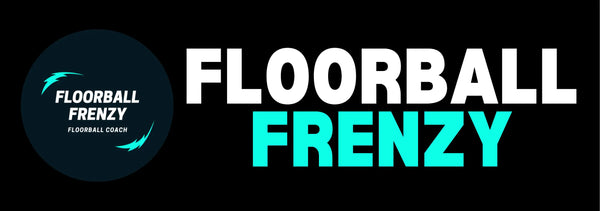Conditioning is Essential to Floorball Success
It’s no secret, floorball today is faster and more dynamic than ever before. The players who want to dominate at their current level and thrive at the next need to be explosive, agile, and relentless. And while most players know the impact of getting quicker, they often underestimate the impact elite conditioning levels have on their game.
Want to be the player Coach trusts to stay on the court for the last shift of a 6–5 game?
Want to be the player who’s still pressing at full speed while others are slowing down late in the period?
Want to reduce turnovers and mental errors in overtime?
If you answered yes to any of these, then you need to take your conditioning seriously.
But here’s the truth: not all conditioning work is created equal.
As floorball training evolves, the question comes up often — is jogging, running, or long-distance “cardio” still valuable for floorball players?
In this article, we’ll break it down.
For clarity, when we say “running” or “jogging,” we’re talking about slow, steady-paced conditioning. This could also mean cycling or work on a stationary bike, but since most players ask about “going for a run,” we’ll stick to that language.
The Pros of Long Distance Running for Floorball Players
When it comes to training, almost everything has a place.
While some strength coaches cringe at the thought of a floorball player jogging laps, the reality is that there are some benefits to steady-paced conditioning.
#1: Jogging & Distance Running Builds an Aerobic Base
In recent years, the shift has been toward sprint- and interval-based work. And for good reason — floorball relies on short, explosive bursts:
- The anaerobic phosphagen system for work under 10 seconds, like a sprint to a loose ball.
- The anaerobic glycolysis system for short, intense work in the 25–90 second range, like a long shift full of transitions.
But the aerobic system is often overlooked. It’s the one that keeps you going all game long and delays fatigue.
Building an aerobic base increases your threshold so you can maintain a high level of play for longer. In practice, this means less burnout in the third period and overtime.
How does jogging help? Research shows that long, steady-paced conditioning increases capillaries, improves mitochondria (your cells’ powerhouses), and strengthens the cardiovascular system. These changes improve your ability to sustain intensity and recover faster between plays.
Still, most floorball players already build this aerobic base through practices and matches. Running can be useful when:
- You’re injured and can’t play.
- You’ve had a long break and lost conditioning.
- It’s early off-season and you’re not getting enough on-court intensity.
- You notice a clear drop in your third-period performance.
So yes, jogging can help — but on-court conditioning is usually better.
#2: Long Distance Work Improves Stamina & Recovery
Endurance training improves how your body tolerates and clears lactic acid. For floorball players, this means less “leg burn” during long, high-paced shifts and quicker recovery between explosive sprints.
If you’re not getting enough on-court conditioning, slow endurance work can be a useful tool.
The Cons of Long Distance Running for Floorball Players
Now let’s talk about why distance running isn’t the go-to option.
#1: Lower Return on Investment
Time and energy are limited, so you want training with the highest impact.
Sure, going for a 5k jog has some benefits. But compared to sprints, agility drills, or explosive gym work, the return just isn’t as high.
If you’re already practicing and playing, you’re likely getting the aerobic work you need. The added stress on joints and time commitment might not be worth it compared to strength, mobility, or sprint training.
#2: Higher Injury Risk
Floorball players already deal with tight hips, lower back issues, and imbalances from the sport’s mechanics. Adding long runs on top of that can easily lead to shin splints, plantar fasciitis, or knee pain.
Put simply: if you’re not trained to run, doing thousands of repetitive strides magnifies existing weaknesses.
#3: Doesn’t Target the Most Important Energy Systems
Jogging mostly trains the aerobic system. But floorball demands all three:
- Sprint speed for quick bursts.
- Anaerobic endurance for repeated high-intensity shifts.
- Aerobic capacity for lasting all game.
High-intensity intervals and structured sprint work improve all three at once — giving you way more bang for your buck.
So Should Floorball Players Run Long Distance?
Generally, our answer is no. Floorball players don’t need to rely on steady-state jogging or cycling.
The exceptions: early off-season, recovering from injury, or rebuilding base fitness after time off. In those cases, jogging can help.
But for most players, higher ROI training options — strength, sprints, mobility, agility, and explosive conditioning — will make you faster, fresher, and more effective on the court.
If you’re serious about reaching the next level, structure your conditioning to mimic the game: explosive intervals, short recovery, repeated sprints, and full-body strength. That’s the formula for being the player Coach depends on when the game is on the line.
Want proven resources to back up your conditioning?
When you grab any product from FloorballFrenzy.com, you’ll also receive:
- BONUS: Mobility & Stretching Guide for Floorball – recovery routines to keep your body fresh for explosive training.
- BONUS #2: Travel Workouts for Floorball Players – interval-style sessions that mimic game conditioning, no matter where you are.
- BONUS #3: Game-Day Nutrition Blueprint – so your conditioning work translates into speed, stamina, and late-game dominance.
These guides were built to make sure every bit of your training pays off directly on the court.

